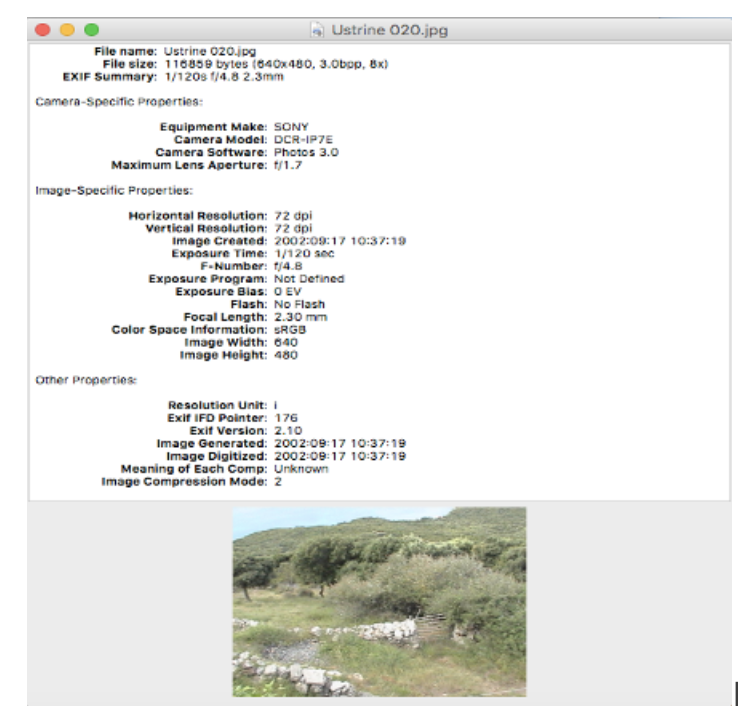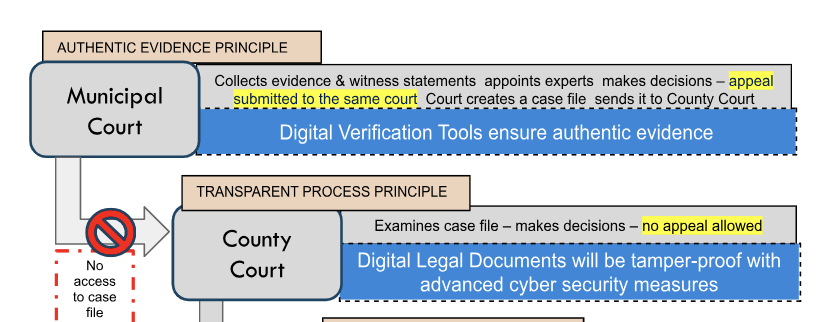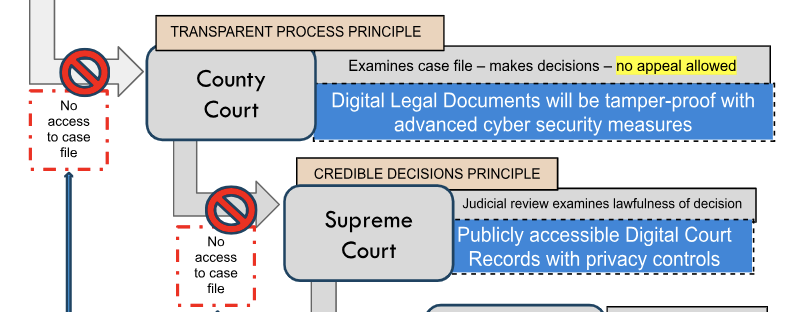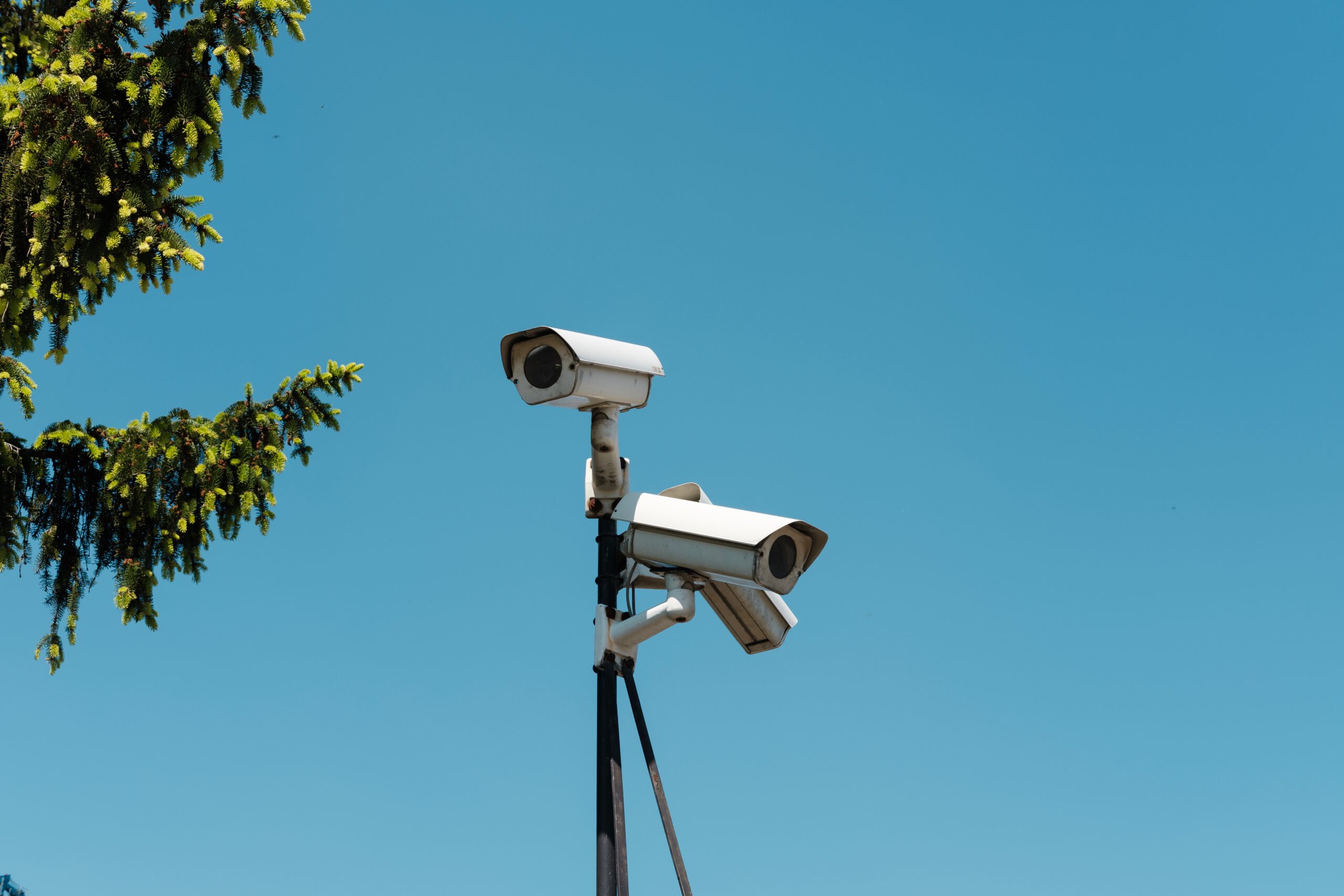Use Case Digital Forensics: Croatian Property Law
Information Flow in the Appeal Process
For courts and judges to be trusted, they must be independent of political and economic pressures. However, independence alone is not enough. Citizens also place their trust in the integrity and accountability of day-to-day legal practices. Digital resources have the potential to enhance these practices, ultimately strengthening citizens’ trust in the entire legal system. In this use case, we will examine the impact of implementing digital resources in a legal system that currently relies largely on traditional methods.
To understand the full potential of digital resources, it’s important to recognize the core principles underpinning legal practice: the authenticity of the evidence presented to the court, the transparency of the process in which the court examines that evidence, and the making of decisions that are credible, ethical, and just.
The key to changes in the legal system is to restore and improve the citizens’ trust.
Today’s appeal practice largely depends on traditional forms of factual evidence prescribed by law, primarily witness statements and paper documents. However, the flow of information in the traditional legal process can raise questions about the integrity of the evidence, because it is not easy to guarantee that evidence remains unchanged and unmanipulated.
Introducing digital resources can enhance the flow of information throughout the legal process, safeguarding the principles of authentic evidence, transparent processes, and credible decisions, while maintaining the continuity of evidence without compromising the foundations of legal practice.
We will examine the flow of information through the five stages (see below) of the current appeal process and explore how digital methods can ensure that the principles of legal practice are maintained and respected, thereby nurturing public trust in the legal system.
Stage 1: Municipal Court
Stage 2: County Court
Stage 3: Supreme Court
Stage 4: Constitutional Court
Stage 5: European Court for Human Rights
For the purpose of this use case, we will use examples from the Croatian property law to highlight traditional methods in legal practices that may undermine the integrity of the courts and judges in the eyes of the citizens.


Stage 1: Municipal Court | Authenticity (Paper vs Digital Documents)
In stage 1, the primary focus is on the evidence presented by the parties involved, their claims and counterclaims to discover the truth.
Traditional Methodology – Paper Documents
In stage 1 of the traditional appeal process, the focus is on the authenticity of the evidence. Municipal courts largely base their decisions on evidence presented as paper-based documents, witness and expert statements, and minutes, to establish the facts of the case. After the decisions are made, the court creates a paper-based case file which would be examined by higher courts in case of appeal.
However, with paper documents alone, it is difficult to establish if the evidence is authentic due to the lack of available information on its origins, modifications, timestamps, submission or change traces, and ownership of the information. Moreover, paper documents are susceptible to physical degradation, loss, and tampering, further complicating the verification process.
It is assumed that the principle of authentic evidence has been upheld. However, such assumptions are not always justified, leading to some case files containing misleading information. For example:
- An expert witness claims that an application form dated 1971 includes a cadastral plan from 1977 as its integral part. This is problematic because it suggests that a document from the future was included in an earlier application, which is not possible.
- An expert witness claims that he conducted his study in 2008 with NM’s permission. However, NM died in 1971, making it impossible for NM to have granted permission.
Case files containing such statements will ultimately be open to public scrutiny, and misleading or inaccurate information will trigger a lack of trust.
Such challenges underscore the need for more reliable methods to ensure the integrity and continuity of evidence from the initial stages of the legal process. Merely assuming the authenticity of evidence and the transparency of the process is insufficient to secure citizens’ trust in the integrity of legal practice. It is essential not only to ensure these aspects but also to visibly demonstrate them to maintain public confidence.
Digital tools can effectively overcome many of the shortcomings of traditional methodologies in the legal process. By digitising evidence and using AI and other digital resources, we can embed metadata that captures, interprets, and tracks documents’ origins, modifications, timestamps, and ownership, as well as flagging content that is unverified. We can not do the same with paper documents, making it more difficult to ensure the authenticity of paper-based evidence. Digital records, on the other hand, are easier to track and audit, ensuring that any changes or submissions are logged and transparent. Additionally, AI and similar technologies can help analyse patterns and detect anomalies, providing an extra layer of security and reliability to the evidence management process. While these digital tools can flag potential issues, this does not provide solutions or make judgments; it simply highlights areas that require further human review and intervention.
Below is an example that shows how easily the necessary information can be accessed for review and intervention, enabling judges and parties involved in the process to ensure authenticity and uphold the integrity of the legal system.
The case file below contains evidence in the form of digital legal documents, which are made tamper-proof with advanced cybersecurity measures to ensure the continuity of authentic evidence. It is likely that citizens’ trust in the legal system would improve if it can be demonstrated that the courts followed the principles of authentic evidence and transparent processes when reaching credible decisions. In other words, legal practice should be open to scrutiny.
Below is an example demonstrating how easily evidence can be uploaded and accessed for review and intervention, enabling judges and involved parties to ensure authenticity and integrity. A case file containing evidence in the form of digital legal documents can be made tamper-proof using technologies like cybersecurity measures, ensuring the continuity and security of authentic evidence.
Therefore, citizens’ trust in the legal system would likely improve if courts adhere to the principles of authentic evidence and transparent processes when making decisions, effectively utilizing digital resources. This approach ensures that legal practices can be examined when necessary, reinforcing public confidence in judicial outcomes that are both traceable and transparent.


Stage 2: Transparency (access to information sent by Municipal Court to County Court)
The Right to Appeal: From Municipal Court to County Court
When the municipal court rules on a case, any dissatisfied party has the legal right to appeal the decision. The appellant must submit a written appeal along with all supporting evidence to the same court that issued the original ruling. The same court will then compile a case file with the relevant documents and forward it to the county court for further review. The authenticity and continuity of the evidence in this file are assumed.
In the appeal process, the county court’s primary focus is to ensure that the municipal court has followed an orderly procedure. The county court then examines the case file to determine if the municipal court’s decision is fair, ethical, and just.
The County court decisions are based on:
- Assumed Orderly Procedure: The municipal court upholds transparency by following prescribed legal practices, including hearing witnesses, examining documents, and producing records of hearings.
- Assumed Accuracy: The county court trusts that the municipal court has conducted all necessary authenticity verifications, thus no further examination of the case file’s accuracy is required at this stage.
In this context, it is assumed that the continuity of evidence has been safeguarded during the transfer between courts, ensuring the transparency of the process. However, the general public may not share this trust, as neither the authenticity nor the continuity of the evidence may have been independently verified before reaching the county court.
Digital Methods to Replace Assumptions with Verified Facts Supporting the Principle of Transparency
The municipal court, whose decision is being challenged, determines which evidence is relevant and compiles the case file. However, this process lacks external scrutiny, as access to the case file is not allowed before it is forwarded to the county court. To enhance public trust, it is crucial that evidence deemed irrelevant by the municipal court is not excluded without thorough examination. Digital methods provide the necessary tools for independent verification, ensuring all pertinent evidence is included and adequately reviewed.
This approach reinforces the integrity and transparency of the judicial process, replacing assumptions with verified facts and fostering greater public confidence in the legal system. Therefore, the county court can rely on digital resources to confirm that the municipal court followed an orderly procedure and used verified, authentic evidence to make a fair, ethical, and just decision. By incorporating digital verification, the judicial system can ensure accountability and transparency at every stage, ultimately enhancing the credibility of legal outcomes.

Stage 3 and Stage 4:- Credibility of Court Decisions vs Citizen Rights guaranteed by Constitution
The Right to Appeal: From County Court to Supreme Court and Constitutional Court
While there is no further appeal against the county court’s decision, a dissatisfied party can request a judicial review by the Supreme Court to ensure that the process has been lawful. Additionally, a review by the Constitutional Court can be sought to ensure that citizens’ rights guaranteed by the Constitution have been respected and upheld throughout the judicial process.
Nevertheless, in traditional legal practice, we can still find statements in public legal documents such as:
“The fact that Judge T.S. was in a conflict of interest due to his family relations with the defendants does not bring into question his impartiality.”
This example demonstrates that the outcomes of traditional reviews into lawfulness and citizens’ rights can still contain questionable statements.
By leveraging digital court records and digital paper trails, this multi-tiered appeal system can offer a more thorough and transparent review, significantly enhancing the fairness and integrity of the legal system in the eyes of the public.
Digital Methodology
Furthermore, digital tools can provide reliable information throughout the judicial process—from verified documents and tamper-proof processes, through digital court records to a complete digital paper trail, all open to scrutiny.
AI-based tools can utilize search mechanisms through the digital court records and the digital paper trail. One of their main benefits lies in their ability to intelligently interpret texts containing large amounts of information. However, they rely heavily on external sources of information—provided these sources are independently trustworthy.
Digital resources and AI tools can safeguard a fourth principle of trustworthy legal practice, namely:
EVERYONE IS ENTITLED TO THEIR OWN OPINION BUT NOBODY IS ENTITLED TO THEIR OWN FACTS.
AREAS OF OUR SPECIALITY
We aim to enhance and improve the user experience and the use of smart technologies in the following spaces

Remote Working
Remote spaces are not designed for work. We provide design solutions that help maintain the quality of work regardless of the space.

Online Learning
We integrate in-person and online learning resources to enrich the existing environments.

Smart Homes
Smart environments is an AI powered service. We design the home space to preserve the privacy
Security & safety of the people who live in it.

Technology in Natural Spaces
Existing technologies need to fit and adapt to natural environments. Our AI-based approach aims to mitigates those challenges.

Technology in Social Spaces
Social systems and institutions are traditionally established & regulated.Our method of introducing technologies into these systems, ensure their ethics and values are preserved.
Book a 30-Minute Discovery Call
We are committed to supporting businesses, government bodies, and institutions in achieving their goals. Schedule a free discovery call with us to receive practical, tailored guidance that meets your unique needs.
During this call, we will:
- Understand Your Business: Review your operations and goals.
- Identify Challenges: Pinpoint the obstacles holding you back.
- Offer Effective Solutions: Provide actionable recommendations.
Let us help you unlock your potential. Book your discovery call today!
Schedule a Discovery call today!
FAQs
Have Questions? We’re Here to Help. Contact Us Anytime.
What services does iCOM offer to improve remote working environments?
We provide design solutions to maintain work quality in remote spaces, ensuring that technology adapts to various environments to support effective remote work.
What is the primary focus of iCOM ICT Research?
iCOM focuses on enhancing the relationship between people and technology, ensuring that technology benefits users, communities, organisations, and society.
How does iCOM help identify and address vulnerabilities in technology usage?
Through our Diagnostic Measure solutions, we analyze vulnerabilities and user preferences to create profiles and solutions tailored to specific needs.
How can iCOM support online learning initiatives?
iCOM integrates in-person and online learning resources to enrich educational environments, enhancing the overall learning experience.
What solutions does iCOM offer for smart home environments?
We design AI-powered smart home solutions that preserve privacy, security, and safety for residents, creating intelligent and user-friendly living spaces.
What kind of training and education programs does iCOM provide?
We offer workshops, training, and education programs aimed at developing digital skills, enhancing professional and executive development, and supporting students and PhD researchers.
How does iCOM’s Technology Laboratory Services benefit clients and students?
Our lab provides practical experiences through use-case scenarios, helping clients and students understand the impact of technology solutions on their organizations and communities.
What are the key areas of specialty for iCOM ICT Research?
Our specialties include remote working, online learning, smart homes, technology in natural and social spaces, and more, all aimed at improving user experiences with smart technologies.
How does iCOM's strategic consulting service enhance organizational performance?
We offer tailored strategic consulting that merges technology and user feedback to empower people, enhance customer satisfaction, and introduce meaningful changes in the environment.
How does iCOM approach the integration of technology in natural and social spaces?
Our AI-based approach ensures that technology fits and adapts to natural environments, while our methods for social spaces preserve the ethics and values of traditional systems.
Let's Work Together
We assist businesses, governing bodies, and institutions in identifying vulnerabilities and opportunities in the relationship between their technologies and users in shared spaces.
Our expertise and domain knowledge drive improvements in users' lives and benefit society.
Email: research@icomict.org
Address: 63 Pagoda Avenue, Richmond, TW9 2HQ UK
